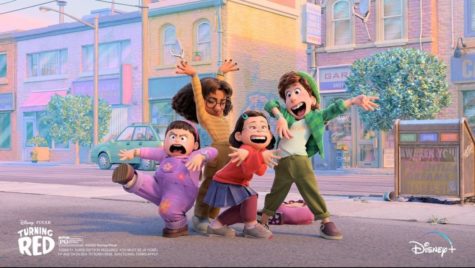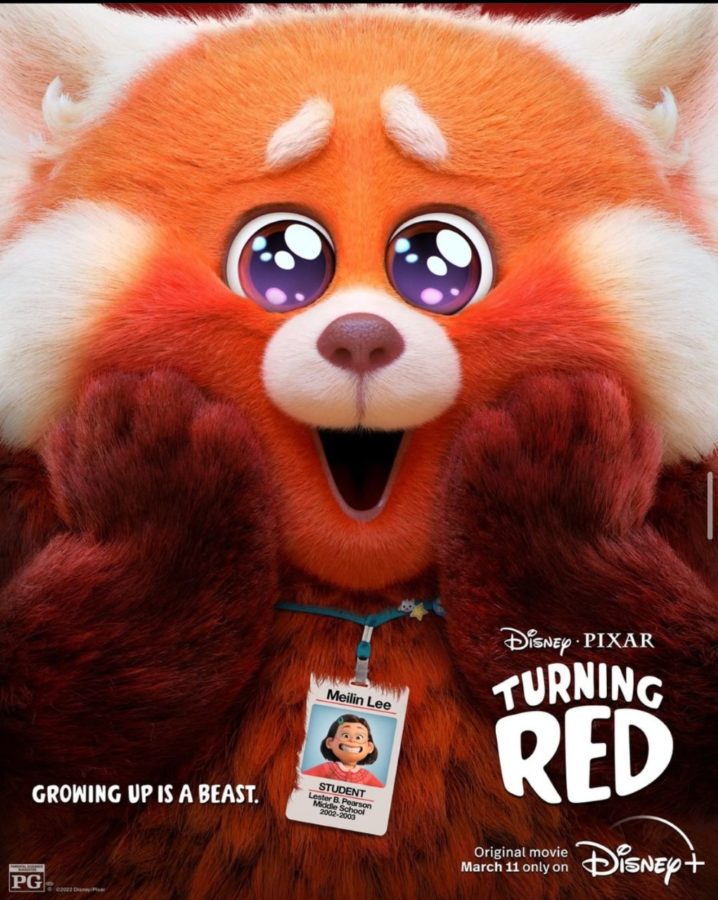This movie made me ugly cry, but I’m not complaining
Photo Credit: @pixarturningred on Instagram
I couldn’t stop screaming over Mei’s panda form. She’s soo cute!!
March 27, 2022
Since its release on March 11th, Disney Pixar’s “Turning Red” has received a huge amount of attention from the public, with many praising the film’s characters, diversity, and storytelling.
The film focuses on a young Chinese-Canadian girl, Mei Lee, who is trying to balance being the “perfect daughter” for her mother while growing up as a typical 13-year-old. One day, Mei wakes up to find out she can turn into a giant, cuddly red panda, turning her world upside down.
As soon as I saw the trailer for “Turning Red,” I immediately fell in love. A new Disney movie with Asian representation and an adorable red panda? Eight-year-old Chelsea would be screaming right now (Actually, 17-year-old Chelsea screamed throughout the entire movie, so there really wouldn’t be any difference).
One of the things I loved about this movie was the amount of diversity present. For example, we can see bits and pieces of Mei’s culture, from the temple her family runs to the dramas Mei and her mother watch. And not once does Mei shy away or get embarrassed of her Chinese heritage; in fact she embraces it, which is something I really admired. Mei’s friend group is also pretty diverse: Priya is Indian-Canadian and Abby is Korean-Canadian (fans speculate that Miriam is Jewish, but Disney hasn’t disclosed any information about that). We can also see other minority characters, such as the Sikh school security guard and Hijabis in a few scenes.
“Turning Red” also explores the relationship between immigrant parents and first-generation children, and how it can be difficult to uphold your family’s expectations of you while you’re still figuring yourself out. My cousin and I had a conversation about it and she said, “Many first-generation children can relate to the conflicts between living up to their parents’ expectations vs. choosing to do what makes them happy.” She added, “It’s an unbelievably difficult and frustrating relationship to navigate, and this movie was incredibly relatable to me and other family members who watched it too.”
I also loved how the film depicts what it’s like to be a 13-year-old girl, almost to the point that it was painfully accurate, in my opinion. From experiencing their first crushes (cough, cough, the drawing scene??) to having the conversation on getting your period for the first time. Mei’s friend group was absolutely amazing as well. Each of them had their own unique personality that didn’t overshadow one another, and we got to see them as the film progressed. I also liked how supportive they were of Mei when she revealed her secret to them, and that they accepted her no matter what. Panda or no panda.

Finally, can we talk about how this was set in the early 2000’s? With the whole Y2K aesthetic coming back into fashion and “Turning Red” taking place in 2002, it’s like we’re having a renaissance! It was fun seeing all the early 2000’s references throughout the movie, such as Mei’s Tamagotchi pet, Robaire Jr., and the worldwide sensation 4*Town (even though they’re not a real band, I can definitely see why Mei and her friends obsess over them).

If you want to see a feel-good movie that also makes you sob, laugh, and cringe while simultaneously wrapping you up in a warm panda bear hug, then definitely check out “Turning Red.” Just be warned: you may feel like you’re 13-years-old again.






